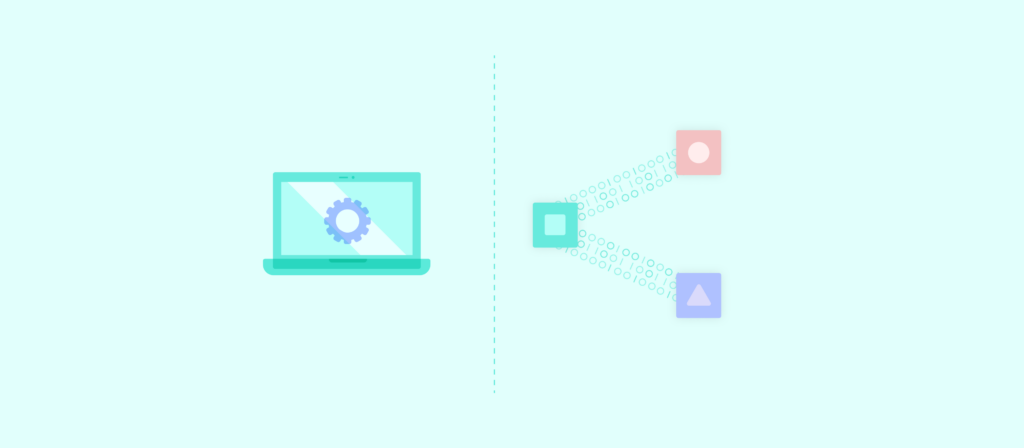While iPaaS and PaaS appear nearly identical, they’re completely different in practice.
Organizations use the former to integrate their ever-growing tech stack, which enables them to keep data across systems in sync and automate their workflows; and they use the latter to streamline and reduce the complexity of developing and maintaining applications.
Let’s take a closer look at each cloud-based service and then compare them directly.
What is iPaaS?
iPaaS, or an integration platform as a service, is a type of integration solution that lets you connect cloud applications, on-prem systems, IoT devices, mobile apps, and build data flows between them.
While it depends on the vendor, an iPaaS solution generally offers the following:
- Application connectors for popular SaaS applications and on-prem systems
- Automation templates for common use cases (as shown below)
- Data centers throughout the globe
- Security and governance controls, such as role-based access controls and activity audit logs
- An embedded offering (i.e. embedded iPaaS) that allows you to use the iPaaS solution for building customizable integrations between your product and others
To help illustrate how an iPaaS can be used, let’s break down an example:
You can connect your CRM (e.g. Salesforce) with your document storage solution (e.g. Box) and implement the following workflow:

1. Once a new account with attachments gets created in Salesforce, the workflow gets triggered.
2. If a folder with the Salesforce account name doesn’t exist in Box, it gets created; if it already exists, the workflow skips to the next step.
3. Each attachment from the newly-created account gets downloaded and uploaded to the folder in Box.
Popular Salesforce integrations
What is PaaS?
PaaS, or platform as a service, is a type of cloud computing service that provides organizations with the key components for developing, running, and maintaining applications; this includes the necessary infrastructure, development tools, operating systems, and middleware.
PaaS is one of the three models of cloud computing, which also include software as a service (SaaS) and infrastructure as a service (IaaS). Here’s how it compares to these other models:

Related: The differences between SaaS and iPaaS
iPaaS vs PaaS
The two address fundamentally different needs. PaaS solutions allow organizations to manage the end-to-end lifecycle of application development in-house, while iPaaS solutions let organizations integrate any number of cloud and on-prem applications.

Ready to leverage a best-in-class iPaaS?
Workato, the leader in enterprise automation, lets you integrate your applications, automate your workflows end-to-end, develop APIs, and more—all without having to write a single line of code.
